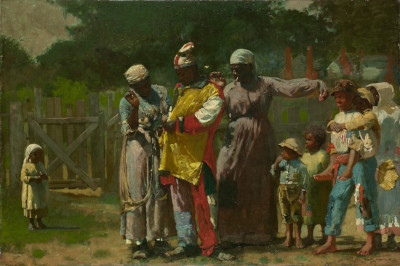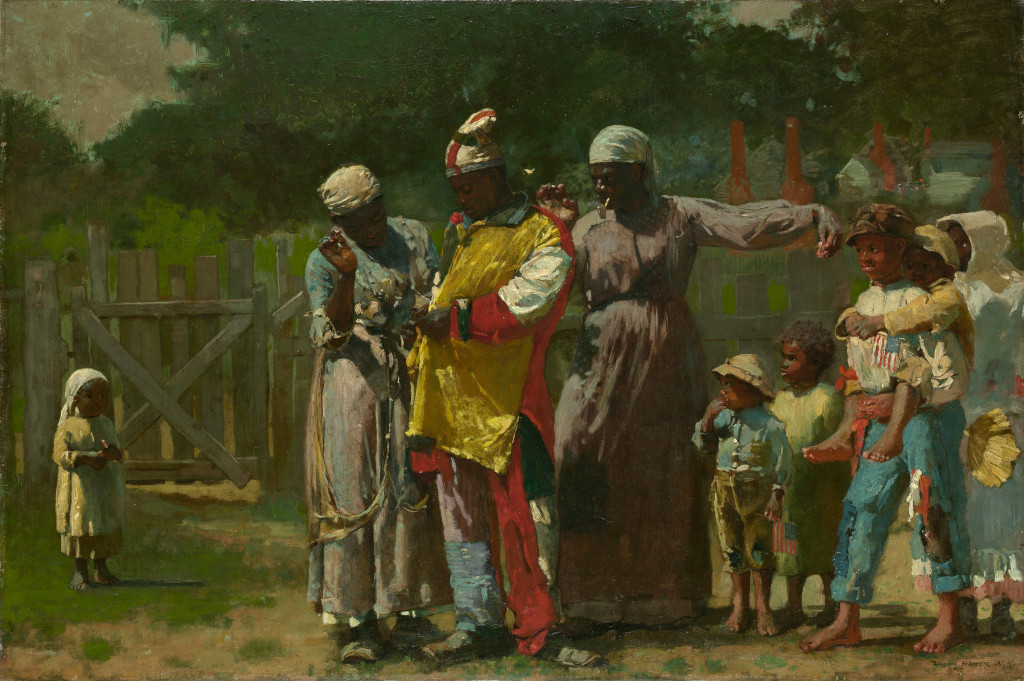Dressing for the Carnival is an 1877 painting by Winslow Homer. The artist would cover the African American community in a manner that was kinder and more interesting than other western artists had done up to that point.
The festival in question is known by two different names within the US, Jonkonnu and Pinkster, depending on where in the country you are. The central figure within this painting represents the main character within the festival, where a man would dress up in a style similar to a Harlequin. He is joined in this painting by two women who helpfully sow his costume together in preparation for the carnival. To the left and right of them are further figures, no doubt excited about the upcoming event and also enjoying seeing this costume being put together, perhaps at the very last minute. Some historians have suggested that the artwork represents the struggles of the black community within the US at that time, and how they still were not quite experiencing the lives that they wanted. This would continue in The Cotton Pickers, and it was clear that Homer wanted to depict the black community in a different way to how other 19th century American and European artists had done. His work was really focused on life in the US, and he rarely displayed European artistic influences, even though they would have been present in some of his techniques.
This piece from 1877, Dressing for the Carnival, is an aesthetically pleasing piece, featuring a rural setting with a gated fence just behind the main figures. There is then a row of trees, somewhat blurred, in the distance. The clothing is beautifully delivered by the artist, with the bright clothing of the central figure taking our attention initially. Small children are then dotted about in a random fashion, giving the impression of a free and open environment in which much fun can be had. This piece does offer an insight into the leisure time of the American poor during the 19th century, in a similar way to how North Europeans had worked many centuries before, such as members of the Bruegel family. This piece here, however, speaks specifically about life in the US and Homer became a much loved painter because of how he worked exclusively on US themes, when many others would continue to mimic the content of European masters.
Dressing for the Carnival can be found in the permanent collection of the Metropolitan Museum of Art in the USA. Winslow Homer remains one of the most respected American artists of all time and the presence of his work will help lift any collection within the country. He was also historically significant in bringing homegrown art to the nation, focusing on local themes and content when previously most had replicated influences from Europe. The transition marked the US getting a personality and character of its own, rather than living in the shadows of where its roots came from. American art would start to gain a significance of its own and offer something a little different to the art world. Homer worked in a Realist manner but was careful not to over develop his paintings so that they remained real and honest. He particularly loved seascapes but actually had a varied career in which figurative work, such as this, was also fairly common.





